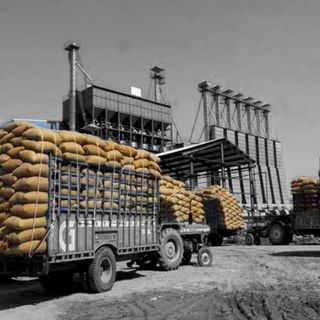Every year when Diwali rolls around, state governments around the country limit the use of fireworks, animal rights activists implore people to reduce noise pollution for pets and strays, and environmental activists deliver report after report about how fireworks contribute to pollution. But every year people still go out and buy fireworks and burst them well into the night, despite the consequences of their actions being widely known.
There is — to put it mildly — a certain cognitive dissonance that exists between what we know about fireworks and what we feel about fireworks. And it’s one that exists all around the world.
Fireworks, scientists say, are compelling because of the speed with which they emit light and sparks, which makes them otherworldly to the human brain and, to some romantics, even magical. But a more rooted explanation could lie in the emotions they evoke within us in just the right amounts. Fireworks elicit suspense, anticipation, and even some fear within us, in the minuscule moment between when they’re lit and when they go off. In safe environments, this thrilling wait sends the neurotransmitter dopamine rushing into our bodies as we see fireworks light up the sky, reinforcing the goodness that people around the world have come to associate with them.
For some, engaging in the risk aspect of it is also rewarding, psychologists say. “People who are high-sensation seekers enjoy risky behaviors more and seek them out.… High sensation seekers have differences in their dopamine system and have more activation of the dopamine system when they are presented with new and complex stimuli,” according to professor of psychology Mary Cain. She added that the low availability of fireworks throughout the year also adds to the fascination they incite, increasing their value in the minds of people who are finally able to access them for an occasion.
But one of the most potent reasons why we continue to indulge in firecrackers is perhaps the most obvious one — conditioning. When children are socialized into associating fireworks with notions of celebration and jubilance, they seek to relive that socialization even into adulthood, to preserve the memories they made as a child. “This is particularly true if people have strong memories of celebrating a holiday in a particular way in their childhood,” according to another professor of psychology, Richard Harris. “People are strongly drawn to recreate that ‘safe’ childhood holiday activity.”
Related on The Swaddle:
Noise Exposure Increases Heart Attack Risk, Study Finds
This conditioning exists not just on an individual but also on a generational and cultural level. In India, for example, pyrotechnic shows including fireworks date back to medieval Indian kingdoms, which would blast them as a form of entertainment for royal occasions. This was a seen as a luxury to be indulged in by rich members of the aristocracy, mainly because of how costly gunpowder was at the time. Eventually, what was once an expensive, showy display of wealth became synonymous with celebration, attracting pyrotechnicians from around the world and slowly becoming accessible to the common folk who wanted some of those enchanting royal displays for themselves.
Gunpowder was then replaced by dynamite in warfare and the former became exclusively dedicated to a burgeoning firecracker industry in India. It was helped along by a ban on imports from China, boosting local industries and furthering the phenomenon of using firecrackers for celebration. The psychological fascination with them combined with centuries of conditioning led to a glorious period of success for firecrackers — that is, until the country woke up their harmful health and environmental effects.
We know now that fireworks cause extensive air pollution, release dangerous toxins and smoke into the environment, and often leave behind dangerous metal particles. We also know a lot of these harmful chemicals don’t decompose, increasing the longevity of the harm they cause. This knowledge has led governments to impose strict limits on the periods of time people can burst fireworks, if not outright bans, hurting the firecracker industry in the past few years.
The last few years have made abundantly clear just how imperative it is that we dissociate firecrackers from our celebrations, battling whatever cognitive dissonance we may have to. This coming Diwali, it may be time to start doing the work to completely rid us, our animals, and our environment of this menace, no matter how beautiful and rewarding it may seem in the moment.




